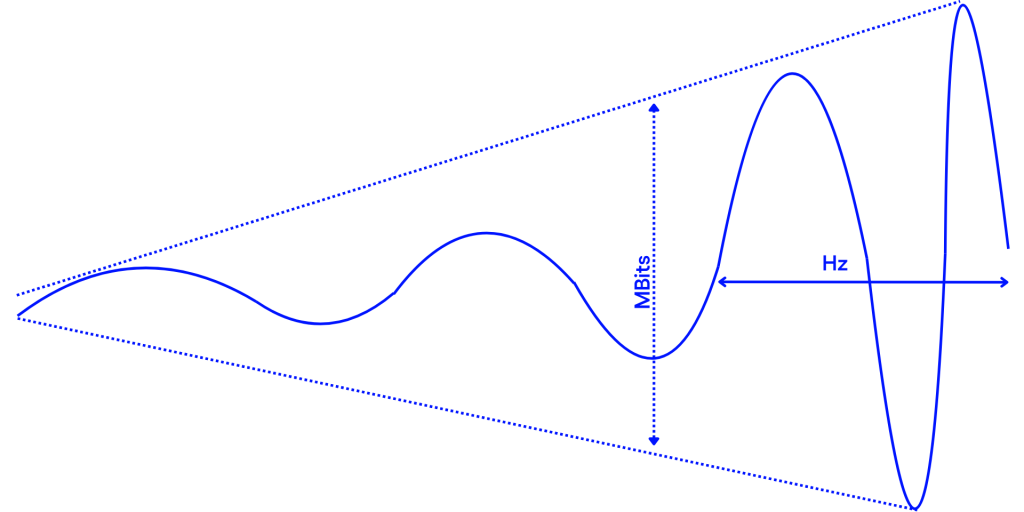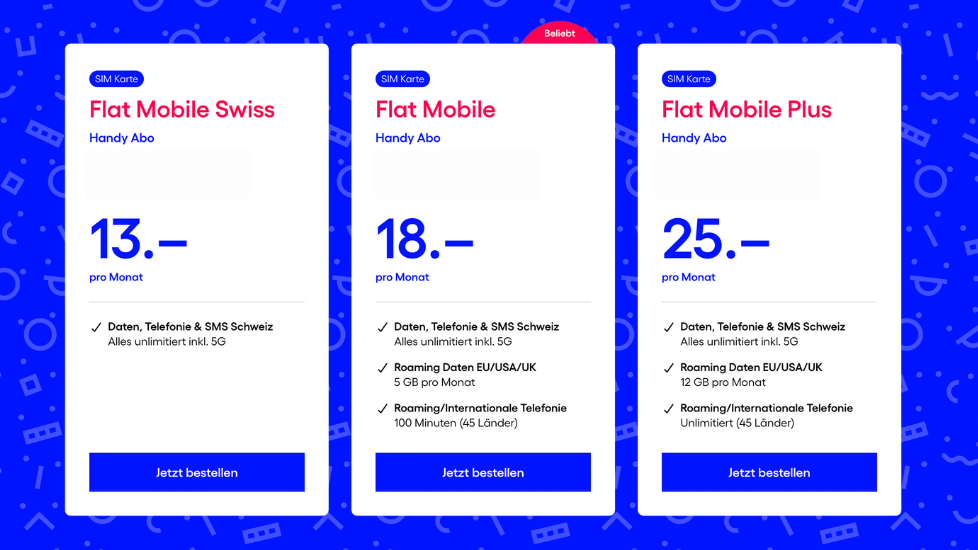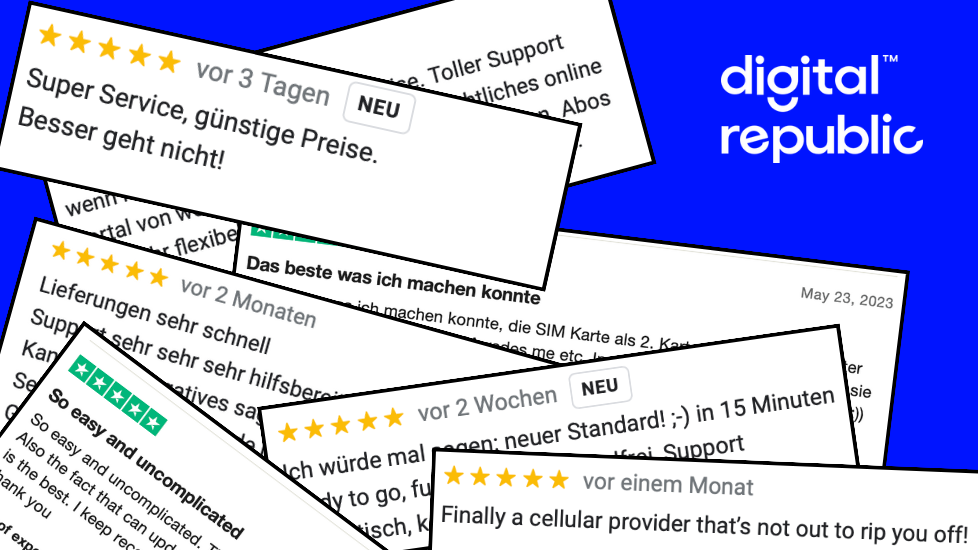Mobile internet for everyone and everything
Why 5G Is Not Always Equally Fast
You’re standing in the city center of Zurich or Bern and your smartphone shows 5G. Your internet connection feels super fast and video and audio streams load instantly and without lag. But as soon as you move towards the suburbs and then take the train through a rural area, the connection stalls, despite the 5G display and full reception bar. This does not mean that your subscription is poor or that reception is bad, but in most cases that you have changed frequencies. This is an important process that ensures your connection in any location.
What Are Frequencies and Why Are They Changed?
Frequencies are the invisible roads (or highways, or sometimes hiking trails) on which data is sent back and forth via mobile communications. Just as radio stations send their programs to cars via a certain frequency, your smartphone communicates with mobile phone antennas via frequencies.
Mobile communications connections are basically divided into lower and higher frequencies, each of which forms a spectrum. 4G covers a certain spectrum from lower to higher frequencies, and 5G does the same.
Lower frequencies are the hiking trails among mobile communications connections. They have a long range and extend into remote Alpine valleys. However, the disadvantage of these frequencies is that they can only transport small amounts of data at a time for fewer simultaneous users, which means that the Internet connection via these frequencies is slower than with higher frequencies.

Your smartphone and the network provider’s antennas are therefore in constant communication, trying to select the best possible frequency for your location. This means that, depending on where you are, your 5G connection may sometimes use a higher frequency of the 5G spectrum and sometimes a lower frequency.
What Does That Mean for You in Your Everyday Life?
To illustrate how these frequencies manifest themselves in your everyday digital life, you can imagine various scenarios:
Scenario 1: You Are in Downtown
You are in a place where there are many antennas close together and many people need to connect to the mobile network at the same time. As a result, your smartphone connects at a higher frequency. Your smartphone therefore has an invisible highway at its disposal for sending and receiving data, and your internet feels correspondingly fast with speeds of up to 600 Mbits.
Only in football stadiums or other places where there are a lot of people at the same time can congestion occur and the connection become slightly slower.
Scenario 2: You Are Traveling in the Suburbs
There aren’t quite as many people to provide with mobile phone service at the same time here, and due to the more spacious residential areas without tall buildings, the antennas are also spaced a little further apart. Here, your smartphone often selects a mixture of lower and higher 5G frequencies, and the speed is slightly lower than in the city center. Nevertheless, you can still stream smoothly without any problems at speeds of up to 300 Mbits.
Scenario 3: You Are in the Countryside or in the Mountains
As expected, we are in hiking trail territory here. The mobile network has to cover vast, sparsely populated areas. This means that the antennas are located far apart, and there is a good chance that your smartphone will connect via a low frequency. This can cause the stream to start stuttering or the video quality to decrease.
On trains, too, you will often find yourself temporarily traveling through regions that only allow low-frequency 5G connections. The same applies to buildings with very thick walls (Minergie standard) or remote valleys.
Mobile Communications Are Diverse and Smarter Than They Appear
In all three scenarios, the mobile network and your smartphone work together to ensure that even when you are moving quickly and in remote areas, your connection is never completely lost and always delivers the best possible speed.
So, having full 5G reception doesn’t automatically mean that your speed test will always show the same speed. For most applications, you’ll have excellent coverage in most of Switzerland, and knowing about frequencies may make the next hiccup in your stream a little less frustrating.
However, it is always best to test each type of connectivity at your usual locations and choose a subscription that does not tie you down too much.
That’s why Digital Republic Mobile subscriptions offer new customers the first month free of charge and no minimum contract term or cancellation period. So you can be just as flexible as your smartphone when choosing the best possible frequency.
Discover Our Other News Articles

The Development of Our Ideal Cell Phone Plans for Switzerland
The path to the current Trio Flat Mobile Swiss, Flat Mobile, and Flat Mobile Plus cell phone plans is also an example of how Digital Republic wants to function as a provider and where its priorities lie. We have quickly transformed ourselves from a pure data SIM provider to a cell phone plan provider. And we have completely rethought the development process.

The Affordable Mobile Provider With Award-Winning Service
When it comes to mobile providers in Switzerland, the wheat is often separated from the chaff when it comes to price. Either you pay little for your subscription and do without services like support or 5G, or you go to one of the big providers and pay more than you might like. At Digital Republic, you get both!

The iPhone Air Comes as eSIM-Only: With Us, You Can Switch to eSIM With Just One Click
With the launch of the iPhone Air as an eSIM-only device, many new users are wondering what will happen to their physical SIM card. At Digital Republic, you can switch to an eSIM in seconds at the touch of a button!
